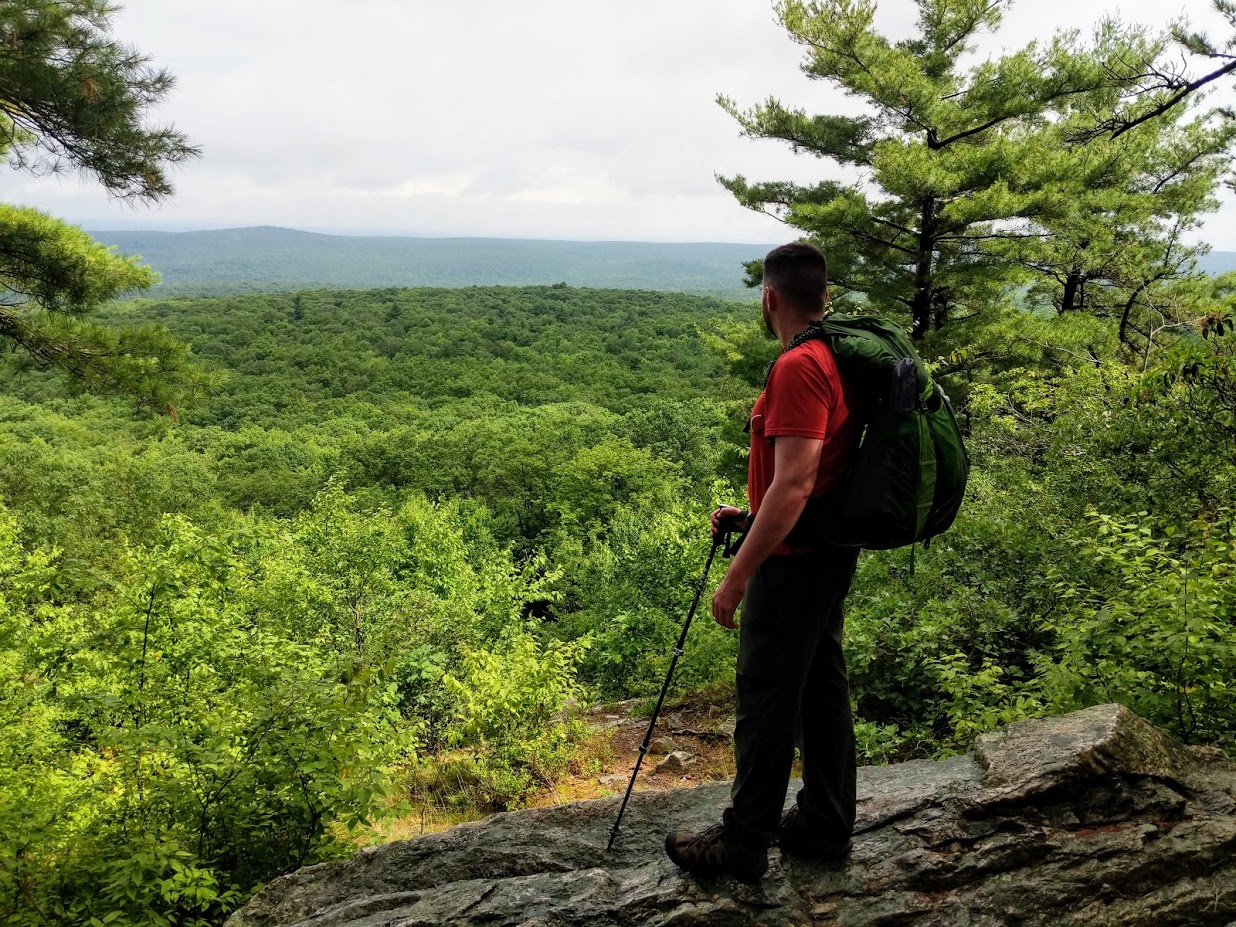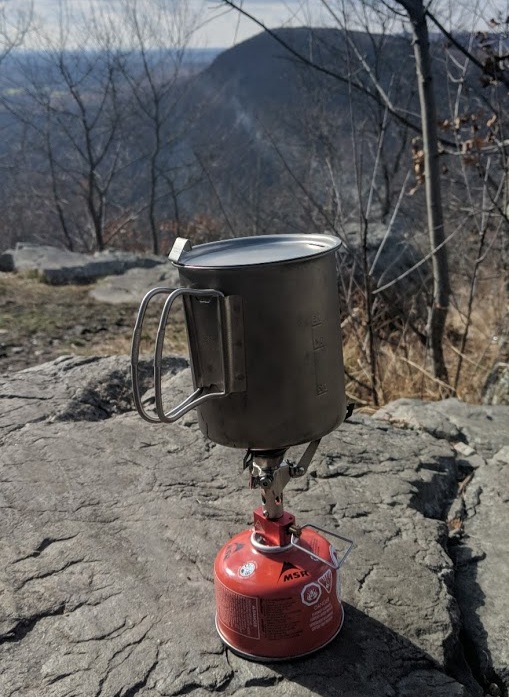What to Pack for a Backpacking Trip

Backpacking season is approaching and I have found myself daydreaming of upcoming adventures.
This season I will be taking a few friends with me, and after talking with them about what they should pack, I was inspired to make this “how to” post for anyone that might need it.
This is not an exhaustive list and will not work in all environments and conditions, but it works for me in most. If you find yourself backpacking in warmish weather in a temperate climate, feel free to use this checklist as a starting point and modify it to your needs.
When I’m creating my own packing list, I break it down by categories or how it will be organized in my pack. If you want specific gear recommendations for each category, keep scrolling down.
Basic Equipment :
Backpack
Rain Cover
Tent
Sleeping Bag
Sleeping Pad
Trekking Poles
Water Bottles or Bladder
Water Filter
Satellite Communicator/Emergency Beacon (Optional)
Inflatable Camping Pillow (Optional)
Utility Pouch
Headlamp
Lighter/Matches
Mini pocket knife
Battery Pack (for the electronics)
Maps/Compass
Tent/sleeping pad repair Kit
Food Bag:
Meals and snacks
Backpacking Stove
Fuel
Cup/cooking pot
Spork
Instant Coffee
Paracord and Carabiner (For doing a bear bag hang of your food)
Trash ziplock (Pack out what you pack in. Leave no trace)
Medical/Hygiene Pouch
Toilet Paper
Baby wipes (a.k.a. field showers)
Toothbrush/Paste
1st Aid kit
Body Glide (to prevent chaffing in the nether regions)
Luekotape or knee brace if needed
Electrolyte Pills (like Gatorade in pill form)
Ibprofin
Antacids
Sunblock (especially if you are not using long sleeves and pants)
Clothing:
Generally you're going to want one set of hiking clothes and one set of camp/sleeping clothes. Synthetics or Merino wool are key for temperature control and moisture wicking. Avoid cotton anything, it will not retain warmth when wet, will stay wet, and will chaff the hell out of you. Cotton Kills.
Hiking shirt
Hiking pants
Merino wool socks (2 pair for hiking, one for camp)
Underwear (at least 2 pair)
Hiking boots
Sun hat (depending on hiking environment)
Insulation in the form of a fleece or packable puffy jacket (or both)
Buff or Bandanna
Hat/gloves depending on weather
Rain Jacket/pants or poncho
Sandals (Optional for camp shoes)
MY PERSONAL GEAR LIST AND RECOMMENDATIONS :
The following is selected gear I have tested out and recommend, and is the stuff I'll be using for the 2019 season. I used all entry level stuff when I started out, but I am bit of a gear junkie and have slowly upgraded over time. Don't feel the need to get the latest and greatest of everything when your start out. Get the basics of what you need, and upgrade as you adapt to your own needs and style. Most importantly, hike your own hike.
(DISCLAIMER: This post contains affiliate links, which means that if you click on one of the product links, I’ll receive a small commission at no extra cost to you. This helps support the page and allows me to continue to make content like this for you. Be assured any gear I recommend I have personally used and approve of. Thank you for the support!)
Photo credit: Tom Petraccaro
Backpack: The Osprey Exos 58
I have used a few packs in the past but I have settled on the Osprey Exos 58 Pack. It is lightweight and has a back mesh panel that lets sweat ventilate out. This mesh panel also acts as a sort of a bouncy suspension system when under load, taking some of the harsh impact off your knees and feet.
Tent: Nemo Hornet 2P (Here's a link to the new 2019 version)
I can't say enough good things about this tent. Super light weight and compact when stored, and cheaper than those ultra-light dyneema fabric single wall tents. For me it is the perfect backpacking tent.
Sleeping Bag: The Enlightened Equipment Down Quilt
Okay okay, not really a sleeping *bag*, but an ultralight down quilt. Why a quilt? Well if you are going for down insulation, when it is compressed it does nothing for you in regards to warmth, so laying on top of half of the insulation is pointless. You can cut a bit of weight by just having the top half of a sleeping bag as a blanket. It can be more breezy than a bag, but being rated for 20 degrees F, it is plenty warm.
Sleeping Pad: REI Co-op Flash Insulated Air Sleeping Pad (Sometimes in combination with the Therm-a-Rest Z Lite Sol)
REI has really been stepping it up with their branded products and their Flash series sleeping pad is the perfect example. I am of the philosophy that it is worth a little extra weight if that means a good nights rest, and that's where the closed foam Therm-a-Rest Z Lite comes it. If I am not hiking too far, I will double up and use both to ensure I am comfortable and well rested for the next day's hike. It also doubles as a great camp seat when folded up.
Camping Pillow: Sea to Summit Aeros Pillow Ultra Light
Going with the same mentality that a comfortable rest is worth a few more ounces, you will never find me leaving my inflatable camping pillow behind. In the Marines I would rest my head on my pack, but if I had this thing, the Iraq War would have been over in half time.
Trekking Poles: Leki Legacy Trekking Poles
I was skeptical at first but after learning from many Appalachian Trail through hikers that their most valued piece of gear was their trekking poles I gave them a try. And after a few years of using them, I would agree. It's like putting a railing on a mountain. You get to use your arms to help pull you up instead of just relying on your legs. They also help save your knees on steep declines, and give you added stability while hopping across boulders or crossing streams.
Water Bottles/Bladder: smartwater bottles or 3L Platypus Bladder
Nothing fancy here. Usually I just use smartwater bottles because they are one liter each, reusable, and light weight. If not that, I use my 3 liter Platypus Bladder. I have been leaning more towards the water bottles recently on longer hikes though as bladders can be difficult to refill and repack on the move, and the water bottles let you see how much water you have left for rationing.
Water Filter: Platypus GravityWorks 2.0 Liter Complete Water Filter Kit
For reliable water purification in the back country, I love my GravityWorks system. Just fill up the dirty bag with water from a stream, hang it from a tree and let gravity do it's thing. In just a couple of minutes you'll have two liters of cool safe to drink water.
Photo credit: Tom Petraccaro
Satellite Communicator/Emergency Beacon: The Garmin inReach Mini
This little guy turns your smart phone into sat-phone that works anywhere on the planet regardless cell signal (texting only). It also has an emergency SOS button that will ping your location and put in you in contact with local search and rescue teams. It's great insurance for if you break an ankle in the wilderness or have a tickle fight with a mountain lion. There's a monthly fee of $15 for the service, but you can turn it off depending on when you want to use it. Worth it for the peace of mind for both you and your loved ones back home.
Photo credit: Heather Palecek
Hammock Camping Shelter Alternative: ENO Hammock, Straps, and UnderQuilt
Don't like sleeping on the ground like an animal? Hammock camping might be for you. When you add everything up, you don't really save much weight, but for some, it is more comfortable than sleeping on the ground. I've tried it a few times and go back and forth on which I prefer. Just make sure you bring your underquilt or you will be cold regardless of your sleeping bag. And learn how to set up a tarp if you are expecting rain.
Headlamp: Black Diamond Spot
For illumination in camp just about any headlamp will do, but I like the Black Diamond Spot. It has different power settings so you can use it as a flash light, reading light, or go full blast for night hikes. Most importantly, it has a red light setting to help keep your eyes adapted to the dark.
Stove: Msr Pocket Rocket 2
Tiny, ultralight, and durable. It's hard to find any flaws with this little guy. Just screw it onto the fuel canister and you are good to go. It's best used for bringing water to a boil for rehydrating backpacker food, or making coffee/tea. If you are looking to do a bit more back country cooking, you might need something with a little more simmer control, but I haven't run into any issues.
Cup/Cooking Pot: Snow Peak Trek 700
Your cooking system is an easy place to shave some ounces without any downsides, so I go with titanium. As a bonus, this 700ml Snow Peak has markings on the inside so I can accurately do meal prep. And it's the perfect size to nest a small fuel can and stove inside of to save some room in the pack.
Socks: Darn Tough Merino Wool Socks
Merino wool is the way to go when it comes to socks. They are moisture wicking, fast drying, and anti-microbial so they don't smell even after days of use. Darn Tough is a great brand that is pricey but guarantees their socks for life. I like to hike with at least three pair. Two for hiking that I can switch out if they get wet, and one pair for around camp/sleeping in. What ever you do, stay away from cotton socks. Unless you like cold wet feet and blisters. (Side note: I will sometimes also use sock liners for extra blister protection.)










